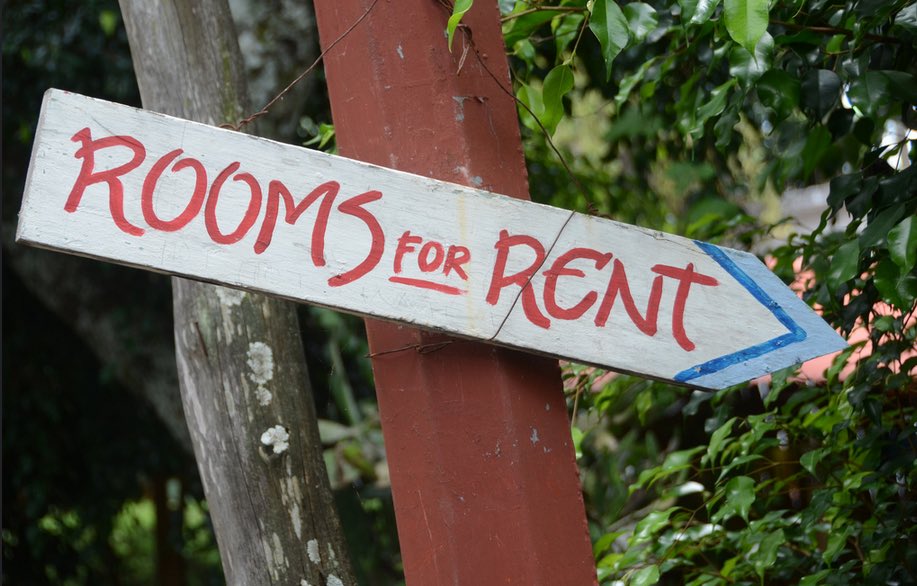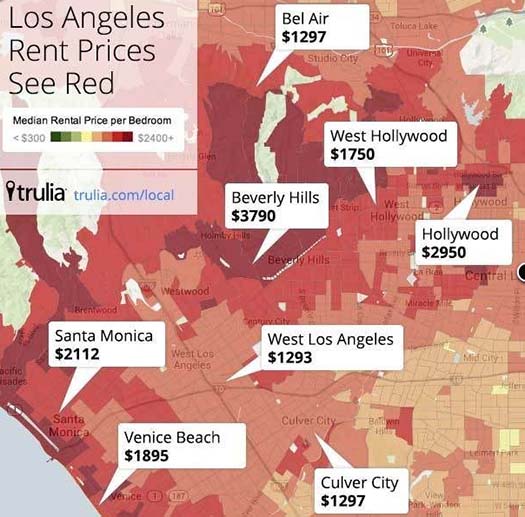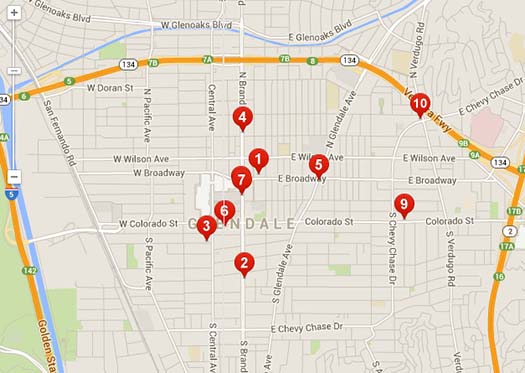Let’s face it, searching for an apartment in any city can be a pain in the ass. Have a new job? Graduating from school? Trekking cross country on a whim? No matter the motivation, moving is a major bitch. And in Los Angeles, with it’s urban sprawl, disparate neighborhoods, and ridiculous traffic, carefully selecting your next abode is a tricker proposition than in most other cities.
That said, being the helpful chap that I am, I figured I’d offer a list of basic tools that any L.A. apartment hunter ought to be referencing on the daily when researching their future dream home. Having moved to six different neighborhoods spread out over L.A. during the past 10 years, I feel like I am an L.A. Jedi at least vaguely qualified to provide some counsel.
I won’t say that this covers everything, but if you use the following ten tools affectively, you’ll be 95% of the way there. But let’s not get caught up (any further) in some flowery introduction.
Here’s the list.

1-3 Apartment Listings
There’s an obvious reason this comes first: If you can’t find a suitable apartment, you won’t be moving out of your parent’s basement to pursue your acting career anytime soon.
For sake of simplicity I’ve lumped this into a grouping of three tools, which I think are pretty much the gold standard.
1. Craigslist – The default. The most comprehensive listing. Pretty much what everyone and their mother uses.
2. Padmapper – It has, in my opinion, a far superior map interface than craigslist. Use it as a cross-referencing and supplemental apartment hunting tool.
3. Westside Rentals – If you want to step your game up and look for paid listings, this is the go-to service for Los Angeles. Recommended: Check with friends and acquaintances within your social circle to see if someone already has a subscription you can “borrow” as you probably won’t need the tool for very long and you can save yourself a bit of coin.
[image credit: la.curbed.com]
4. Google Maps
Google Maps is one of the most powerful internet tools that we take utterly for granted. When considering a prospective rental property as a tenant, use this tool to test out commute times, measure proximity to local businesses (grocery stores, hardware, big-box stores, etc…), find public transit options (like how close is the Metro) and even go to street view to see what the street parking situation might look like.
Incredibly simple, yet powerful.
5. Crime Mapping
No one wants to live in a hell hole. Period.
Fortunately, the L.A. Times has a crime mapping tool that breaks down crime occurrences neighborhood by neighborhood so you can see exactly what you might be moving into.
From the Times:
“…readers can keep current on local crime and compare crime levels across more than 200 neighborhoods and localities. When violent or property crimes rise sharply in LAPD patrolled neighborhoods, the system delivers a crime alert. Long-term statistics, like the rankings to the left, are available for areas covered by LAPD and the sheriff.”
6. Pollution Mapping
Ditto what I just said on crime, but in this case for pollution.
L.A. Times has a nifty responsive map that will show you where pollution is most rampant within Los Angeles county. If you have allergies or are particularly sensitive to air quality, this may be of great import to you.
7. Reddit
I tend be a relentless advocate for Reddit, and as a frequent reader (and occasional contributor) to r/LosAngeles I don’t mind plugging it here as a useful tool for folks on the move in L.A.
That said, if you’re looking for some more qualitative information about moving to or around Los Angeles, here are some useful threads you might consider reading.
Advice for an Irish couple moving to L.A.
Advice for a family of three moving to L.A.
Advice for a New York transplant moving to L.A.
Advice for a 19 year old moving to L.A.
8. Yelp
Ok, let’s talk about Yelp, and how it helps determining the quality of a prospective address.
Proximity of businesses is one thing, but HIGH quality food, service, and entertainment options are another. Before moving to a new area, I think it’s always wise to do your due diligence and find out what potential “go-to” options are within a stone’s throw of your new pad.
My methodology? Center in on the geo location of the property address on Yelp and do a search for your favorite type of cuisine(s), or any special business that you know you’ll be relying on. Perhaps you want to live in an area with great Indian food, or tacos, or a nail salon, barber, auto mechanic, or dry cleaner you can rely on. Or maybe bars or lounges or movie theaters are your thing. So do your searches for those types of businesses, and then sort by ‘highest rated.’
advertisements
[image credit: www.yelp.com]
If a business has more than 4 stars, it at least has my attention, then I can glance through the reviews to determine how legitimate they are or if the reviews appear to be written by a god forsaken (basically, too generic).
It’s not an exact science, but my basic thinking is the more high quality businesses within a 2-3 mile radius of my address, the greater my quality of life will be overall, and the more likely I am to rent in that location.
9. Walkscore
Again, this is a derivative of quality of life play. The less you drive and are stuck in traffic, the happier you’re going to be.
Using Walkscore was one of the first factors in my decision to move to downtown Long Beach, where I resided for four years and, because I was self employed, could literally go days at a time without using my car. Imagine that!
As corollary, check out Curbed LA’s 10 Most Walkable Neighborhood’s in Los Angeles (based on Walkscore data)
10. The Department of Consumer Affairs
End of the day, you need to know your rights and what questions you should be asking to any potential landlord.
From understanding rent control to the subtleties between different types of leases and your rights as a tenant, the list of articles here is mandatory reading before you rent in Los Angeles, especially if you’re a first timer or are just moving to the city. You can read the full guide at the DCA website for the county of Los Angeles. Pay attention to the sections on “Before You Rent” and “Living in Your Rental Unit.”
Last Word
When it comes down to it, the more research and thought you put into where you live, the happier you’re going to be as a human being. Think about it, you’re going to spend more time in your apartment (or within a close proximity) then anywhere else in the world, so why not put the most effort into securing the location that will bring you the maximum amount of joy, and the least amount of stress?
Finally, I would leave you with this piece of advice: use your eyes. The best way to find an apartment, know a neighborhood, and make an informed decision about where to move is to pound the pavement and see for yourself. You’ll often uncover gems that you won’t find in the digital space, and when you’ve signed that lease, gotten all the furniture moved in, and triumphantly plop down on your couch and relax in the comfort of your new home, you’ll feel all the better for it.
Happy hunting!
advertisements
**UPDATE**
The folks at Reddit suggested to add these three tools in, so I figured I’d drop them in here as an addendum. Thanks guys!
Radpad: An app for helping you find your next apartment.
City-Data.com: Helps you find out crucial demo details on a prospective area. You can search by zipcode. Very handy.
Zillow.com: More apartment listings!
This is by no means an exhaustive list. If you have any tools or recommendations, please add them in the comments below!
advertisements


